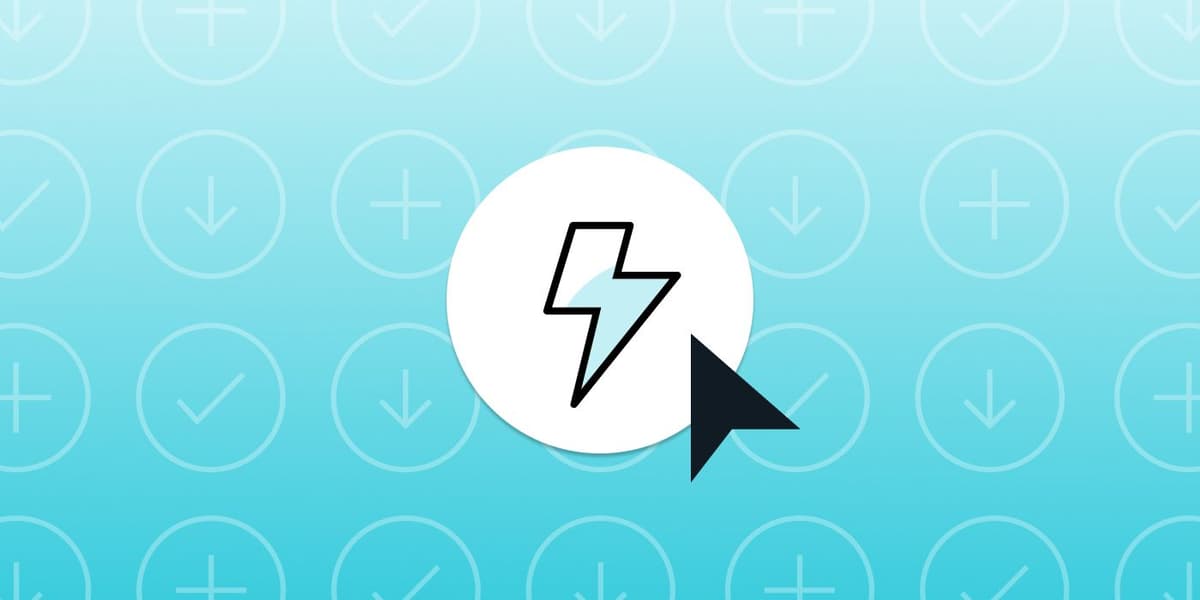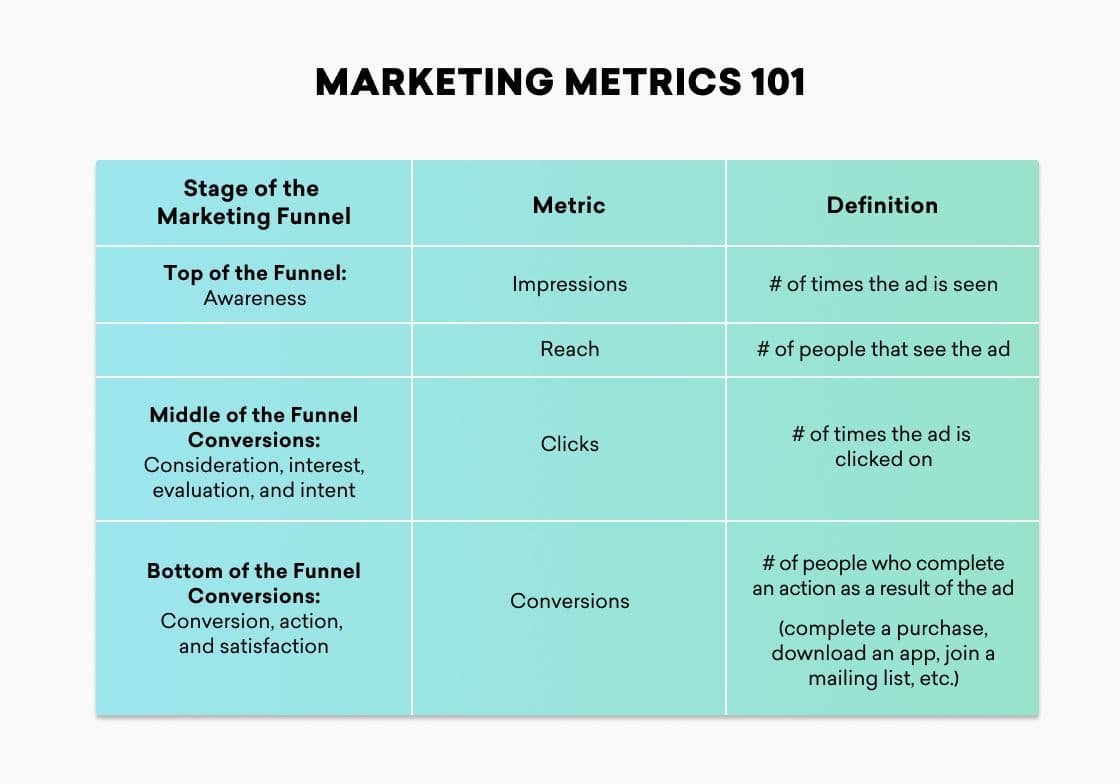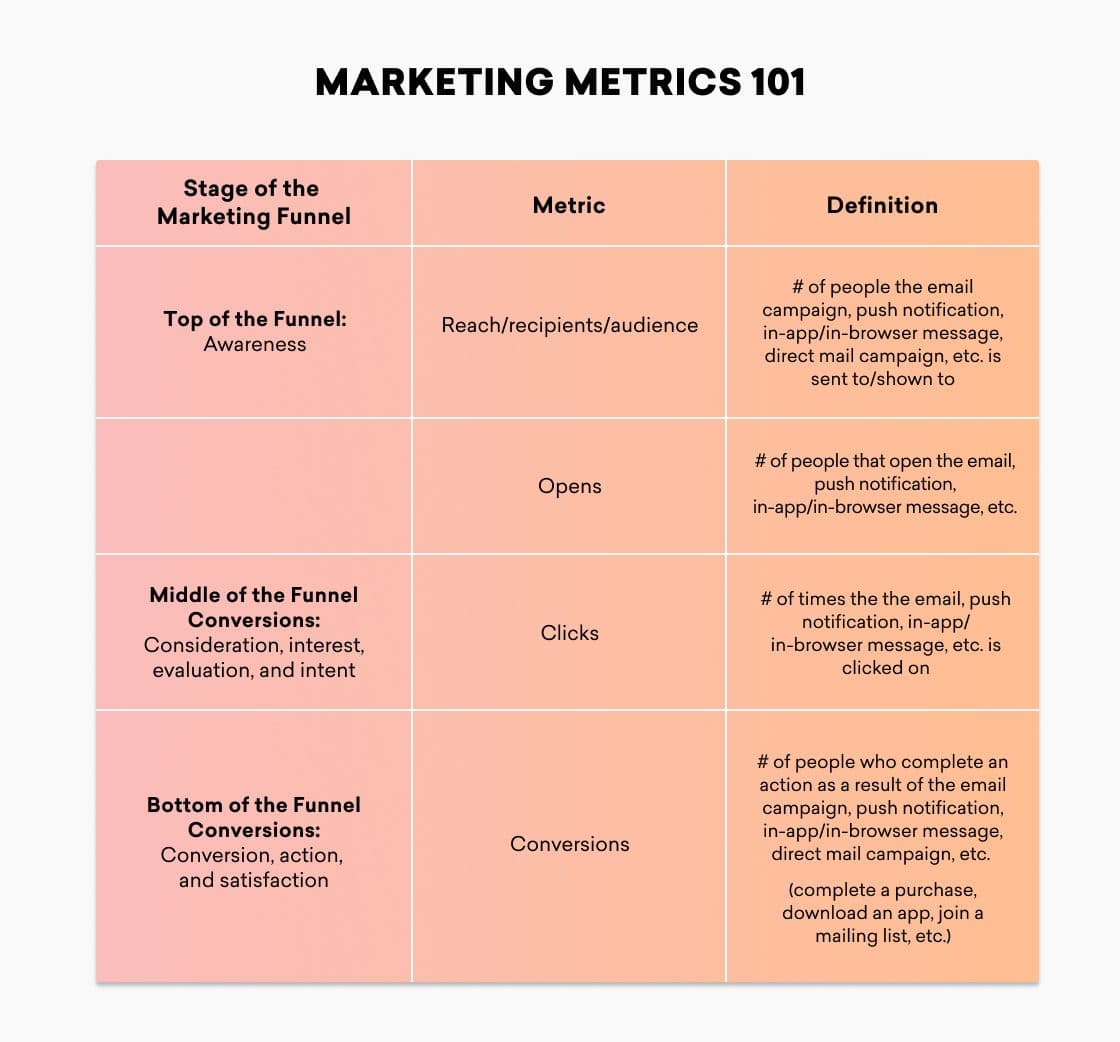What’s a Conversion?
Published on January 10, 2020/Last edited on January 10, 2020/5 min read


Mary Kearl
WriterYour company is preparing to unveil the biggest promotion of the year. The team has put together a must-watch onboarding video tutorial for new customers. The finishing touches have been added to a branded animated gif ready to make its debut. You're launching a new rewards program and can't wait to see how people respond. Any time your company connects with customers—in big or small ways—you have the chance to make an impact. For every brand email, push notification, in-app or in-browser message, and, yes, even direct mail campaign that motivates people to take action, your team can (and should) gauge that impact—and conversions are one of the most telling marketing metrics to track.
Conversions are a measure of the actions that are most critical to your customer engagement efforts.
If you think of a traditional marketing funnel where the goal is to reach a group of prospect customers and convince or convert them to take a particular action, there are metrics that indicate customer engagement at every step of the journey from awareness to action:
Those at the top, such as awareness and interest, are often referred to as "vanity metrics" because while they may represent larger numbers (you're likely to reach more people than you'll convince to buy something, after all). These don't necessarily translate to bringing in business. Conversions, on the other hand, are a measure of that most important stage in the funnel—when customers take action.
But What Is a Conversion, Anyway?
Simply put, a conversion is when a customer completes an action—makes a purchase, downloads an app, joins a mailing list, the possibilities are endless—as a result of a marketing campaign.
If you think of a simple digital ad, such as one from any of the websites or apps you've engaged with today, there are several metrics that can be tracked to measure that ad campaign's performance. Among these KPIs, such as the most common types included here, conversions measure the greatest level of engagement and impact.

Email campaigns, push notifications, and other customer-facing messaging have similar types of metrics that can be measured:

What Types of Conversions Marketers Track (and Why)
The type of conversions that matter the most vary by company vertical and customer stage of engagement. At the industry level, some brands focus on conversions tied to revenue, while others may prioritize those that lead to community growth or media consumption. Some common categories of conversions include:
- Transactional conversions: Completing a purchase, making a donation
- Membership-related: Joining a community, creating an account, signing up for a free trial, subscribing to email updates
- Interest-based conversions: Consuming content (articles, videos, music, classes, games, etc.)
Depending on the stage of the customer journey and your campaign goals, here are some sample conversions you may want to track:
Top of the funnel conversions (awareness)
- Downloading an app
- Creating an account
Middle of the funnel conversions (consideration, interest, evaluation, and intent)
- Downloading a free guide
- Signing up for a free trial or free tutorial, webinar, or online class
- Joining an email newsletter list
Bottom of the funnel conversions (conversion, action, and satisfaction)
- Completing an online profile
- Becoming a subscriber, becomes a member
- Making a purchase, makes a donation
No really, bottom of the funnel (loyalty, retention, advocacy, and evangelism)
- Becoming a loyalty program member
- Upgrading from free member to paying community member
- Inviting friends and family to join
- Sharing a promo code on social media
Defining Your Campaign's Conversion Goals
Any time you create a customer campaign or experience, one of your first steps should be defining your conversion goal. As a general rule, customer messaging efforts are most effective when there's one strong call-to-action (CTA) as opposed to many competing options. That means establishing one corresponding conversion goal per campaign. For instance, if you're planning to deploy a push notification with a CTA for app users to stream the latest podcast episode of their favorite show, the number of podcast streams per push notification recipients would be the conversion to goal for that given campaign.
Final Thoughts: Why Conversions Matter
Engagement metrics like conversions are critical for measuring:
- The effectiveness of your customer messaging
- The quality of your customer experiences
- Whether your acquisition dollars are paying off (or going to waste)
- Whether your personalization and segmentation efforts are working
- And, ultimately, the overall health of your business
That said, while many companies collect this type of performance data, only 0.5% of that collected data is actually ever used or analyzed. When data sits in silos, it prevents teams from learning about (and acting upon) user preferences and behavior. Best case scenario, your customer messaging comes across as out-of-touch. Worst case scenario, you lose more and more customers to churn. That's not sustainable. And it doesn't have to be the only outcome. That's why we've developed real-time data visualizations of user conversions to empower brands to quickly and easily track customer engagement metrics like conversions and take action in real-time.
Related Tags
Be Absolutely Engaging.™
Sign up for regular updates from Braze.
Related Content
View the Blog
A day in the life of a data scientist on the BrazeAIᵀᴹ forward-deployed engineering team

McKay Jensen

The new inbox reality: How iOS changes are reshaping email marketing

Aparna Prasad

Experience optimization: Turning data insights into better journeys
